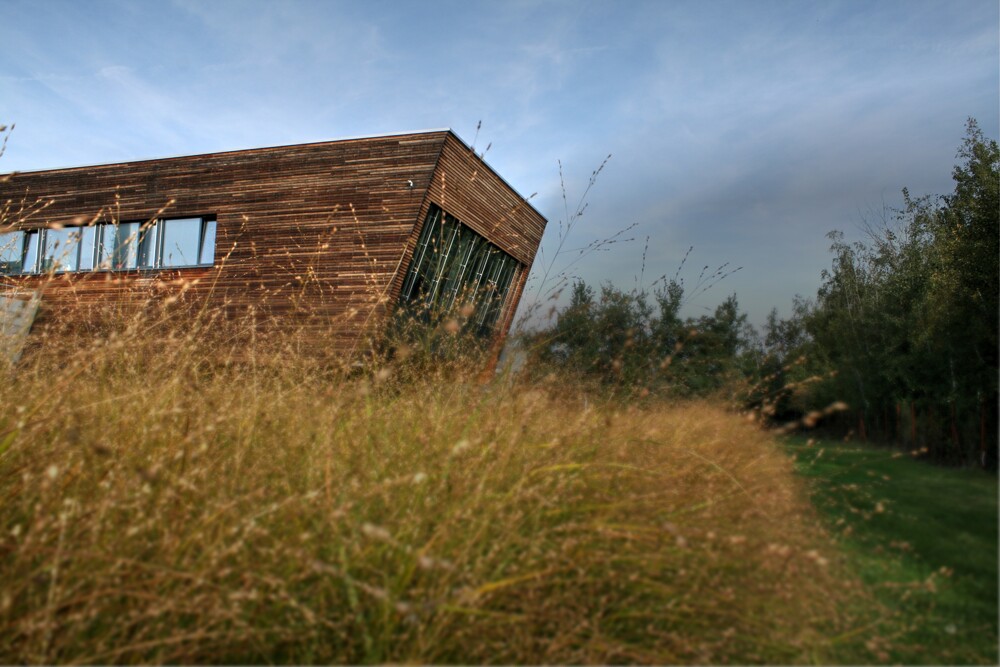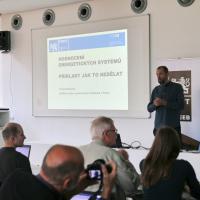

To evaluate the energy systems of buildings, it is necessary to choose a suitable method. The more modern the building with a lower share of heat for heating and with a higher share of RES use, the more accurate calculation with a shorter time step, from hours to minutes, is necessary. This is the only way to bring the results of theoretical calculations closer to reality and to achieve agreement between promised and actually achieved energy savings.
Celý článek je převzatý z TZB-info.
On September 26, 2018, the seminar focused on the evaluation of energy systems in buildings was organized by the University Center for Energy Efficient Buildings of CTU. The expert leader of the seminar was Assoc. Ing. Tomáš Matuska, Ph.D. and other lecturers were Ing. B. Šourek, Ph.D., Ing. Roman Vavřička, Ph.D., Ing. Nikola Pokorný, Ing. Jiří Novotny. Although the names of the lecturers are full of academic titles, the lectures were adapted primarily with the aim of addressing not only specialists, but also the public who are concerned with the issue.
The length of the time step fundamentally affects the calculations
It has been confirmed that the historically proven methods are already losing accuracy for the assessment of the energy demand of buildings, or the systems, systems, equipment used and their influence on the final energy demand of the building. It is primarily a matter of what data is used, i.e. over what period of time the necessary data are determined. Typically, with the classic day-degree method, the average temperatures for a year or a month are used. In the buildings from the last century, which have been surpassed in terms of construction, with large heat needs for heating, compliance with calculations according to other, more modern methods, including software simulations, can be achieved at a level of up to 10%. However, if the time step is shortened to an hour or less, and buildings built according to building standards valid after 2000, especially after 2011, are compared, then the differences increase and the result according to the day-degree method can be several times greater than with other methods. Then, for the comparability of the results, it would be necessary to introduce correction coefficients. But on the basis of what exactly to determine their size? Similarly, for calculations according to newer methodologies given by the relevant ČSN, TNI or with the use of TRNSYS software, it is absolutely essential to choose a calculation step of one hour, or less, if the result is to be as close as possible to reality.
The need for the most accurate number of energy needs is not only determined by the fact that the energy certificate of the building is processed. This is essentially an administrative matter based on the use of a certain methodology, which the processor should know professionally. Of much more fundamental importance is the result for the design of energy equipment, for determining not only their energy efficiency, but also their economic efficiency. This is concretely manifested in supply contracts, promises, how much each device will save, what is its contribution in the area of renewable energy use, etc.
It is precisely proven that the procedure according to the so-called common sense: "we will put one more solar thermal collector there, add another photovolatile panel, and thus increase the savings directly proportionally" is wrong, there will not be such a big increase, and it can even reduce the efficiency. Especially in the area of single-family houses, the issue is quite often simplified, while precisely in single-family houses, where certain averaging, which is possible for residential and other larger buildings, cannot be applied, a detailed analysis with a very short time step is extremely important for the harmony between calculation and practice .
Example of FVE and family house
Typically, when calculating the use of a small PV plant on a family home to cover the electricity needs of common electrical appliances, it turns out that there are big differences between the calculations of the electricity needs coverage. Reasoning comes out without the use of accumulation. The need for accurate calculations consists in the fact that, for example, the FVE supplier looks at the electricity needs of the appliances in the house for a year, e.g. 2500 kWh, and promises that the FVE will cover it with its real profit of 3000 kWh per year. In some model case yes, in reality no. The reality may be something around 15 to 25% coverage, i.e. 400 to 650 kWh, and the rest of the electricity will be supplied to the grid, i.e. without economic efficiency. The differences between the calculations based on the annual balance and the calculations where the current supply of electricity and its demand are monitored hour by hour are at the level of over 60%. The shorter the time step in the calculation is chosen, i.e. the closer we get to the actual course of consumption and supply of electricity from PV, the lower the calculated use of PV. Moving from a step of one hour, which means that we insert average values into the calculations gradually every hour, to a step of 5 minutes, i.e. based on average values every 5 minutes, will reduce the coverage to 7%. This value turns out to be less significant, given the accuracy of the initial data, and thus the hourly step can be considered suitable. Unfortunately, a more accurate calculation does not have a favorable marketing significance for the application of PV, so many PV suppliers do not like it.
Energy Zero House
In the current conditions, it is possible to realize a family house that will have a zero need for supplied energy in the annual total. The condition is a sufficiently large FVE. In the model situation, an average family house (reference area 200 m2, 4 people) was taken, the roof of which has an area of 60 m2 for the installation of PV plants. If the house will be built as low-energy, or even passive, the requirement can be met when combined with a high-quality heat pump, both ground-water and air-water. If a roof area of up to approx. 110 m2 were available for the PV plant, then the requirement could also be achieved with a biomass and natural gas boiler. It is interesting that the estimated investment costs are within a relatively narrow range between 420 and 500 thousand crowns. Due to the difference between the purchase price of electricity from the grid and the purchase price, which will have to be supplied from the PV plant to the grid in order to equalize the annual balance of supplied energy to zero, the payback of all such solutions at today's prices is approximately 32 to 40 years. It is therefore beyond the lifetime of the device.
Shortening the return may bring about a systemic increase in the purchase price of electricity from small PV plants, taking into account the above calculations, which should respond to market price developments. Another solution is one-off subsidies that reduce investment costs.